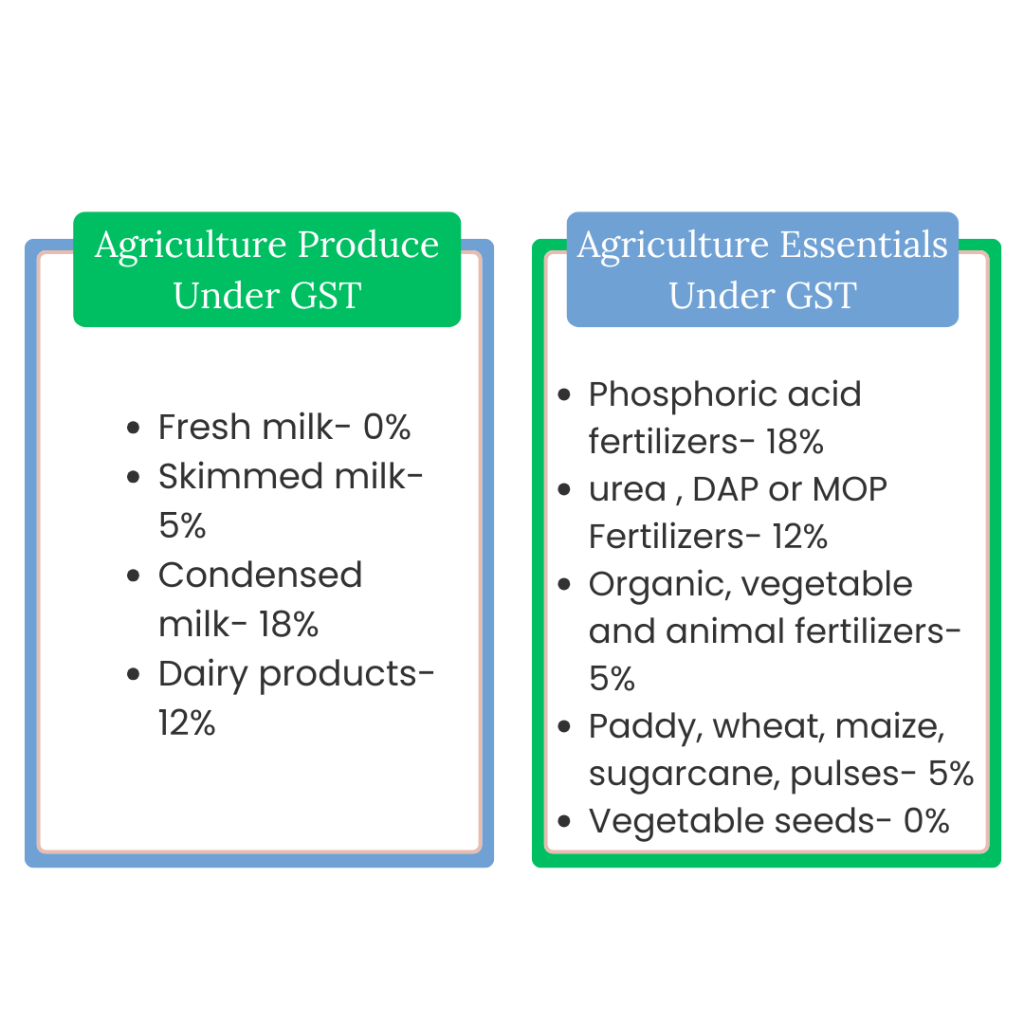How GST Has Impacted India’s Agricultural Sector?
The Indian economy depends on the Agricultural Sector as it contributes around 16% of the GDP. Agriculture comes under the Union and Concurrent list of the Seventh 447-448 Schedule to the Constitution. It means both the Centre and State governments can form rules and charge taxes on agricultural produce and other machinery related to the sector. However, after the Goods and Services Tax implementation, the burden of VAT, Excise Duty, and Service Tax is reduced. Though VAT is still applicable to various agricultural goods, along with GST. This article is going to discuss the impact of GST on India’s agriculture sector.

Taxability of Agricultural Produce Under GST
Butter, ghee, butter oil, milk oils, and other dairy spreads are taxed at the rate of 12%. Other agriculture essentials like fertilizers are taxed at the rate of 5% though the rate was 6% under the previous tax regime.
Phosphoric Acid fertilizers are taxed separately at the rate of 12% under the GST regime along with an 18% rate for the pesticides widely used in the agriculture industry. In the old tax regime, on manufacturing tractors, there was a waiver, but now they are taxed at the rate of 18%, though the manufacturers can claim an Input Tax Credit, it still has increased the cost of tractors.
Another important product of the agricultural sector is milk, which is taxed at multiple levels under the GST. For example, there is no GST on fresh milk while 5% is on skimmed milk and the GST is applicable at the rate of 18% on condensed milk.
Food items such as rice, sugar, salt, wheat, and flour are exempted from CENVAT while State VAT applies to all agricultural goods except meat, eggs, fruits, and vegetables in each state at 4%. The produce attracts State VAT before the final consumption, however, unprocessed food items are exempted from VAT.
National Agriculture Market NAM and GST
The Central Government launched the National Agriculture Market or NAM portal in 2016. It aimed to facilitate the sale and purchase of agricultural commodities. The NAM is an e-portal that creates a unified system all across the country. To give fair pricing of agricultural produce and boost farm income, it integrates APMC (Agricultural Produce Market Committees) Mandis or wholesale markets from all across the country on a unified platform. Within the E-NAM portal on the platform of platforms, farmers can sell their produce outside their state borders.
The implementation of GST has aligned with the NAM project of the central government as it has helped unify the market as GST is a destination-based tax, levied by the state where the product is consumed. GST facilitated unifying the market by easing the supply chain by eliminating the separate registration requirements in each state. As of now, more than 1000 APMC Mandis across more than 25 states and union territories have been integrated.
Get Started with TaxDunia
GST has also subsumed most of the indirect taxes, creating a path for the successful implementation of NAM. To get further information on the Impact of GST on Agriculture Sector, reach out to TaxDunia. We offer personalized solutions for your unique needs.

